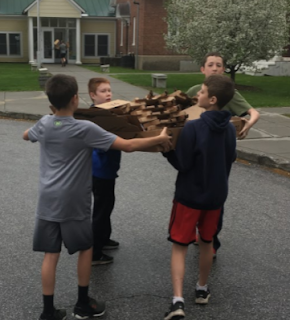

Today’s March is for Making
inspiration (30 #makered
inspirations in 30 days) came
from a big AHA that I had at the SxSwEDU conference last week during Katie Krummeck’s session on Maker Based
Instruction.
Towards the end of our
session, one of the participants shared how he struggled with the feelings that
he has when all learners don’t end
up with a beautiful product at the end.
Sometimes you need
more risk taking and more ideas and possibilities.
Sometimes you need to
spotlight the process of collaborating, perseverance, self direction!
Sometimes you need a high
resolution output and
craftsmanship
She explained that if you
are looking for high resolution, you’re most likely going to see less risk
taking. Thinking about what the goals are will determine which
rubric you are going to use. Even
though I'm not a big fan of rubrics,
I could see how they could be used to honor different types of maker
skills.

I cannot tell you how much her advice impacted me as a maker educator. Sometimes when I’m around my maker friends who shine at craftsmanship, I start feeling that I don’t belong in this group who calls themselves Maker Educators. I usually work out those feelings, but they always come back when I’m surrounded by the amazing craftsmanship of some of my maker friends.
Katie’s words helped me
more clearly identify which maker skills I bring to the table and to honor
those skills. It made me wonder how we as educators could
help our students notice the skills they bring and to honor those strengths
during the process of creating, making, and learning. I created this graphic to help me name three different areas where a maker might excel in.
At other times,
craftsmanship is what you need in a maker project. The maker who has the
attention to detail, the skills to
move beyond the prototype and create the high resolution product necessary is
what you need in the final stages of many maker projects. This is especially true when your maker project might be a gift, a work of art, or a
solution that solves a real world problem.
Katie really helped me
believe in myself as a maker educator and to be able to name which maker
skills I bring to the table. It also helped me more explicitly name the
outcomes I am looking for when I design maker centered learning opportunities
for students and teachers. Her advice gave me tools that could help me honor
the different types of makers in my classroom and to make sure their
contributions and strengths in the process of making are honored.





No comments:
Post a Comment